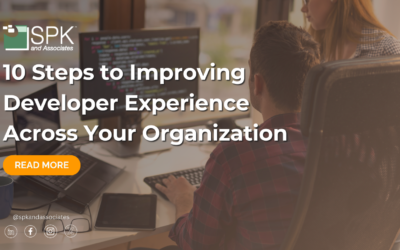In Part 1 of this article, we talked about the banking innovation industry threats and market conditions. We discussed how DevOps and CI/CD tools can help to mitigate threats. We also discussed why tools like Jenkins, CloudBees CD/RO and CloudBees Software Delivery Automation can help banks meet customer needs. Let’s now deep dive into Part 2 to discover the open-source and enterprise tools being used in harmony.
Open Source and the Enterprise
Creating a more agile application delivery process has led DevOps organizations to adopt open-source software tools. Many of these tools have large, collaborative communities filled with highly skilled and creative developers. This constant stream of innovation has led to developers adopting open source tools in volume. In addition to Jenkins, other important open-source DevOps tools include tools such as Chef, Docker, GitHub and Puppet.
Open-source software projects may have frequent updates and active communities. Also, they often require developers to work independently. A security update, for example, may require a developer to accurately patch and test the software.
Hyper-vigilance is required as a basic hygiene factor for data, application security and reliability. It also provides awareness for areas ripe for banking innovation. A breakdown in a customer-facing application can lead to disaster, and may lead to an extensive audit. Critical errors can make it difficult to explain to Executives why a core tool used in the DevOps process is an open-source tool.
Highly regulated industries like financial services may use open-source tools like Jenkins. But, these highly-regulated industries need more functionality, predictability and support than the offering within an open-source community. CloudBees provides an enterprise version of Jenkins.
CloudBees Core delivers Jenkins for the enterprise with:
- Advanced features.
- Guaranteed levels of availability.
- Professional support.
- Tested and verified updates.
Continuous Delivery and Banking Innovation
In the world of large enterprises, banks are unique. Their products are essentially data exchanges. This data is sensitive, regulated and highly proprietary. The stakes for banking executives are high. In turn, this means application developer stakes are just as high. Leveraging the benefits of continuous delivery depends on the success of several best practices, including:
- Strong, ongoing commitment to DevOps practices. As banking IT organizational practices swing back and forth from centralized to decentralized, executives and IT teams need to ensure that DevOps practices are built into the application lifecycle.
- Meaningful collaboration extended to include line-of-business Executives. Banks should model themselves on the software industry. Developers need to understand the business. By collaborating with banking executives, developers will gain a better understanding of business requirements and Executives will have a better understanding of the software delivery process.
- Use tools that are designed for enterprise use. The development and deployment tools need to have the scalability, predictability, manageability, high availability and support that businesses require.
With over 262,000 employees, HSBC qualifies as one of the largest banks in the world. Change management and banking innovation can be challenging To tackle this, they chose CloudBees to provide developers autonomy. Learn how their DevOps journey led them to CloudBees.
Developers should also maintain awareness of emerging banking innovation trends. As DevOps teams rise to the demands of delivering applications more efficiently, they should also be aware of what lies ahead. With awareness comes preparedness. The possibility of providing input at the ideation stage, early in the software delivery process.
Banking Innovation Trends 2022
Banking as a platform
Think of this as Wall Street meets Silicon Valley. Banking as a platform is essentially partnerships between banks and FinTech’s. FinTech companies bring disruptive innovation to the financial services industry. They offer technology-first services to customers. For example, Square provides a credit card processing platform to support small businesses; BillGuard provides a consumer platform to identify hidden fees. Flint offers a mobile payment application that uses a phone camera to process payments. These companies are a real threat to traditional banks, in the way that Amazon was a threat to both publishers and bookstores. Some banks are starting to apply the lessons learned by bookstores. They are now combining the best in products and services with the cutting-edge distribution. Banks who fail to innovate and are unable to keep pace with offering new services delivered via web or mobile, risk being left behind.
Improving the customer journey
Banks who don’t have a strategy to retain digitally savvy customers, risk losing valuable customer relationships. One of our financial services clients are a pioneer in applying UX (user experience) to their product development. The company has a huge UX lab and is constantly testing new deployments.
The lesson for banks: when creating new products, think “digital-first”. That’s where customers live. For example, BNP Paribas CIB used CloudBees for their DevOps implementation and realized that the customer’s journey is the most important. “We must be very open-minded and listen to their feedback. To succeed we need to combine innovation with customer feedback,” said Riad Ghafir, Global Head of Product Factories. “We are deploying products seven to 10 times faster. Some deployments that took hours are now taking minutes.” Using tools to close that feedback loop and make customers happier is a key to banking innovation.
Big Data
Banks know a lot about their customers, but what do they do with all this data? While banks have been using advanced analytics for years, there is still a huge opportunity to leverage Big Data. Many organizations are unleashing their data and allowing business users and developers to complete data analysis. In addition, self-service analytics platforms and data visualization tools will allow banks to create deeper customer relationships. They will also provide a platform for innovative products, perhaps even customized to the behavior of the specific bank customer.
Multi-channel delivery
We live within a “now-culture”. Customers expect financial services to available on-demand and delivered as easily as their transactions on Amazon Achieving the seamless service delivery requires much more than simply creating new mobile applications. Banks will have to deliver solutions using the best channel. This “best” channel will be based upon customer preference, including innovations like embedded banking service delivery. For example, in the accounting space, SaaS players like Xero and Quickbooks already integrate with a large number of banks – this allows businesses to perform most banking operations without ever leaving their environments.
Creating a path way for banking innovation
These are interesting times for the banking industry. The threats and opportunities are real and immediate. These are also interesting times for those who develop and deliver applications for banks. The ability to provide new applications and updates at an accelerated pace while balancing new practices, methodologies and tools can be applied to meet the challenge.
As stated previously in this paper, DevOps is a movement that promotes a collaborative culture and practices for rapid and frequent application development. Continuous delivery is a process that enables accelerated delivery of code and updates. With solutions such as CloudBees Core and Jenkins, we have tools that enable the DevOps culture and practice, as well as the continuous delivery process. If we’re going to live – and thrive – it’s essential to have a reliable partner to support our innovation.
CloudBees Drives Enterprise DevOps and Continuous Delivery
CloudBees is the hub of DevOps, providing companies of all sizes with smarter automation solutions and actionable insights for accelerating software delivery. The CloudBees continuous delivery solutions offer DevOps teams the industry’s broadest suite of DevOps products, from on-premise to cloud-native, from self-managed to self-service, from guided best practices to flexible choice. By making the software delivery process more productive, manageable and hassle-free, CloudBees puts companies on the fastest path to transforming great ideas into great software and returning value to the business more quickly.





